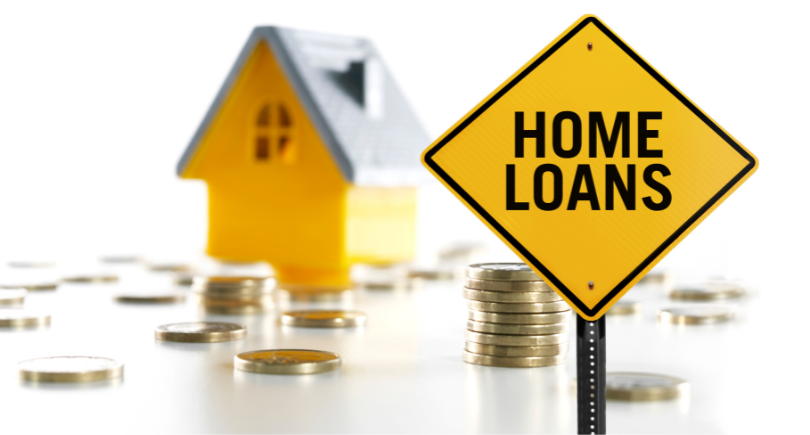Step-by-Step Process to Get Conventional Mortgage Loans
Step-by-Step Process to Get Conventional Mortgage Loans
Blog Article
The Crucial Aspects to Think About When Choosing Between Fixed-Rate and Adjustable-Rate Home Mortgage Fundings
When assessing home loan choices, borrowers encounter an essential decision in between fixed-rate and adjustable-rate fundings, each providing unique benefits and prospective mistakes. Secret factors to consider such as interest price security, predictability in monthly payments, and the implications of possible rate modifications can significantly impact lasting monetary health. Furthermore, understanding the anticipated period of homeownership and the total cost of loaning can form one's method. As these aspects intertwine with individual economic scenarios and take the chance of tolerance, the implications of this option might not be as straightforward as they seem. What subtleties should be prioritized in this critical decision-making process?
Rates Of Interest Security
When picking a home loan, understanding passion rate security is essential for notified decision-making. Rate of interest prices can considerably impact the total expense of a home loan, and recognizing the nature of these prices is crucial for consumers.
On the other hand, adjustable-rate home mortgages (ARMs) begin with lower first rates that may change periodically based on market conditions. While this can result in lower settlements originally, it also introduces uncertainty, as consumers might face boosted payments if rates of interest climb. For those considering an ARM, it is crucial to assess the chance of rate modifications, the capacity for settlement rises, and the length of the initial fixed-rate period.
Ultimately, the option in between fixed-rate and adjustable-rate home mortgages depends upon private threat tolerance and economic situations. Understanding rates of interest stability aids borrowers make informed choices that align with their long-term financial objectives.
Month-to-month Repayment Predictability
While customers often focus on interest rate security, the predictability of regular monthly payments is similarly vital in the home loan option process (Conventional mortgage loans). Monthly payment predictability plays an essential role in budgeting and monetary preparation, as it straight impacts a house owner's capital and overall financial health and wellness
Fixed-rate home mortgages supply a constant regular monthly settlement throughout the life of the loan, allowing consumers to prepare for and plan their costs successfully. This stability can be especially advantageous for first-time property buyers or those on a set income, as it removes the uncertainty associated with rising and fall settlements.
Conversely, adjustable-rate home loans (ARMs) usually feature lower preliminary payments that can transform with time, causing potential irregularity in month-to-month commitments. While originally enticing, this unpredictability can make complex financial preparation, especially if customers do not make up future price adjustments.
Prospective Price Changes
In the world of variable-rate mortgages (ARMs), prospective rate changes stand for a substantial variable that borrowers have to thoroughly take into consideration. Unlike fixed-rate home mortgages, where the interest price continues to be unmodified for the life of the lending, ARMs are identified by fluctuating rate of interest that are linked to market indices. This irregularity can bring about significant adjustments in month-to-month settlements, impacting the customer's monetary preparation and budgeting.
Debtors must be mindful of the margin and index used to determine these modifications, as they straight influence future passion prices. Additionally, ARMs typically consist of caps that limit how much the passion rate can raise at each adjustment and over the life of the loan, which can offer some degree of protection against extreme rate walkings.
Recognizing these prospective changes is important for consumers, as they straight influence long-term repayment obligations. Examining individual financial scenarios and take the chance of tolerance is vital when choosing whether an ARM lines up with one's financial objectives.
Funding Term Considerations
Finance term factors to consider play a pivotal role in the decision-making procedure for borrowers choosing between adjustable-rate and fixed-rate mortgages. The size of the lending term dramatically impacts regular monthly settlements, interest rates, and total economic planning.

Inevitably, borrowers have to assess their personal situations, financial goals, and market conditions when weighing the ramifications of loan term selections within each mortgage type.

Overall Expense of Loaning
Fixed-rate home mortgages provide foreseeable monthly repayments, as the rate of interest price remains consistent throughout the car loan term. This predictability can lead to lower Our site total costs, particularly in a steady or declining rate of interest price setting.
Conversely, variable-rate mortgages (ARMs) generally start with lower initial rates, leading to lowered in advance prices. However, these rates can raise after an initial period, leading to potentially higher long-term costs. Debtors should take into consideration the frequency and degree of price modifications, in addition to the total car loan duration, to properly analyze the economic ramifications.
In addition, the overall expense of loaning incorporates not only rates of interest however additionally fees and other associated expenses, such as closing prices and insurance (Conventional mortgage loans). more helpful hints When reviewing mortgage options, consumers need to conduct a comprehensive expense analysis over the life of the lending. By doing so, they can make an enlightened choice that aligns with their monetary objectives and take the chance of tolerance
Final Thought
To conclude, picking between fixed-rate and adjustable-rate home mortgage car loans requires cautious consideration of several critical aspects. Rates of interest security and regular monthly payment predictability are paramount for efficient budgeting, while the possibility for price adjustments in ARMs introduces financial uncertainty. Furthermore, the expected period of homeownership and the total price of loaning, consisting of rate of interest and connected costs, need to straighten with specific monetary conditions and take the chance of tolerance. Such a detailed evaluation will certainly facilitate enlightened decision-making in home mortgage selection.
Trick factors to consider such as passion rate stability, predictability in monthly payments, and the ramifications of prospective price changes can substantially influence lasting economic wellness. Interest rates can dramatically affect the general cost of a mortgage, and acknowledging the nature of these rates is necessary for customers. Unlike fixed-rate mortgages, where the interest price stays unmodified for the life of the finance, ARMs are defined by rising and fall interest rates that are connected to market indices. Furthermore, ARMs often include caps that restrict just how a lot the interest rate can enhance at each modification and over the home life of the financing, which can supply some level of security versus radical rate hikes.
Passion rate security and regular monthly payment predictability are critical for efficient budgeting, while the potential for rate adjustments in ARMs presents monetary unpredictability.
Report this page